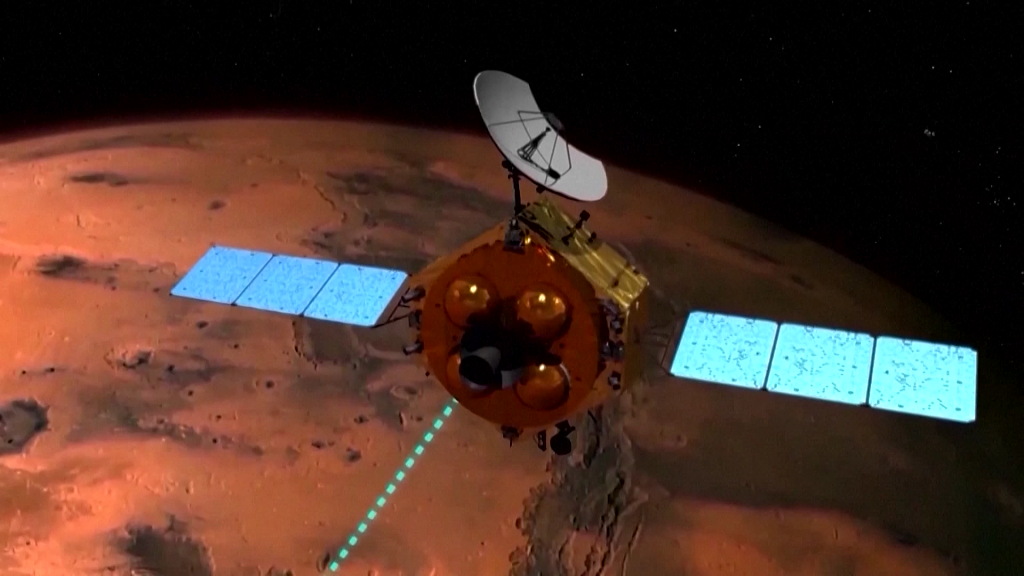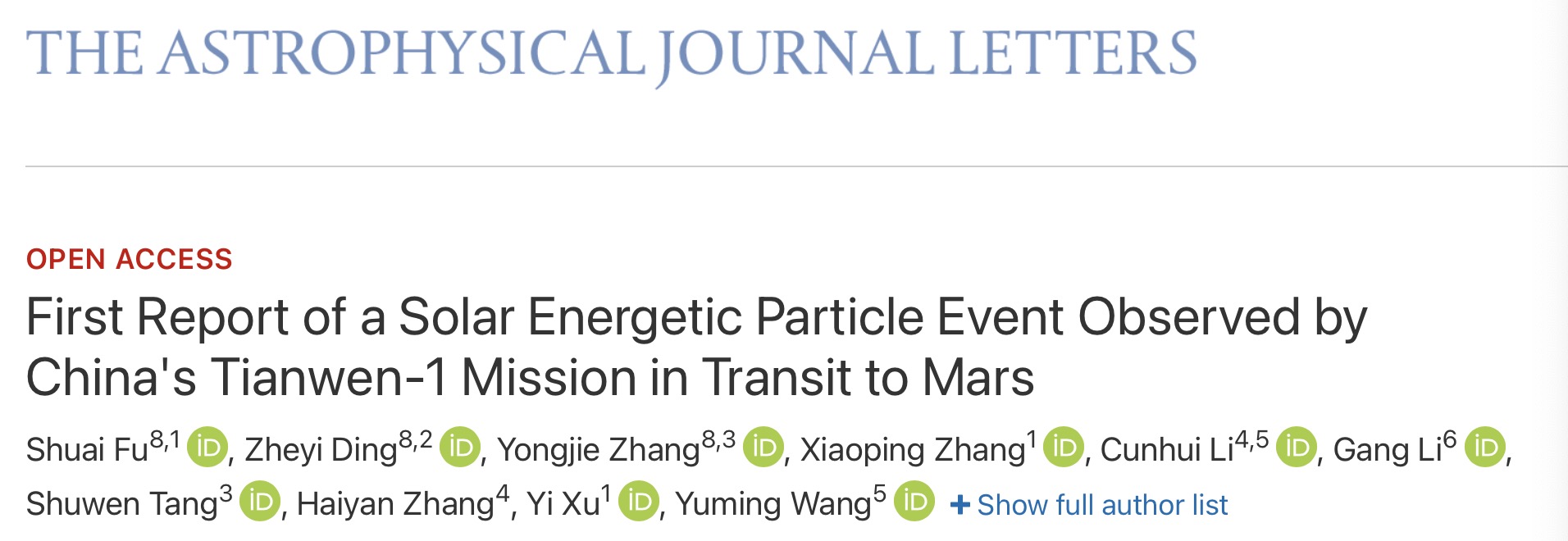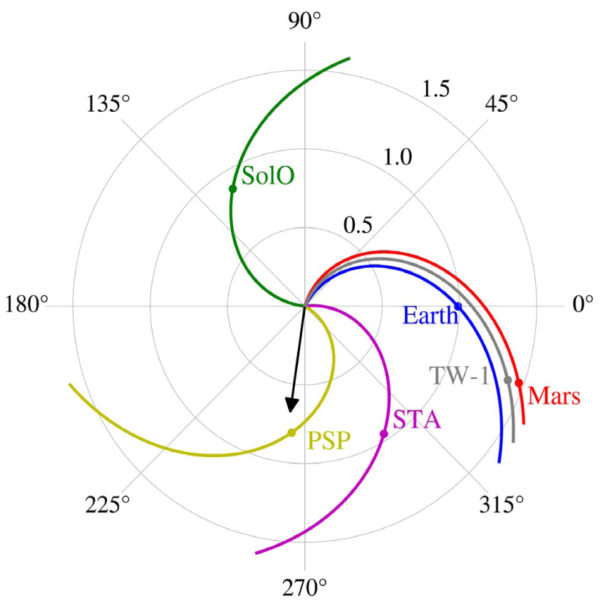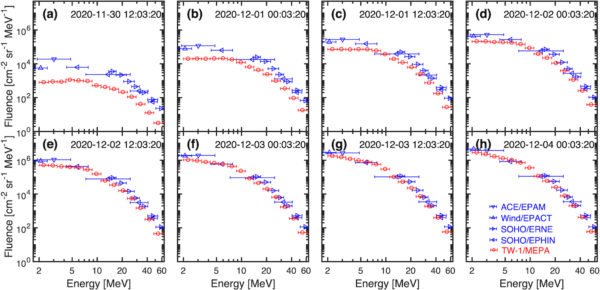
Scientists publish study on "First Report of a Solar Energetic Particle Event Observed by China's Tianwen-1 Mission in Transit to Mars", July 26, 2022. /CFP
Scientists publish study on "First Report of a Solar Energetic Particle Event Observed by China's Tianwen-1 Mission in Transit to Mars", July 26, 2022. /CFP
The first report on a solar energetic particle (SEP) event seen by China's Tianwen-1 spacecraft's Mars energetic particle analyzer (MEPA) was unveiled by The Astrophysical Journal Letters on July 26, 2022.
MEPA, China's first scientific payload for studying the interplanetary and near-Mars space radiation environment, was launched in July 2020 alongside the Tianwen-1 spacecraft to begin an exploration mission.
An international team led by scientists from the Institute of Modern Physics (IMP) of the Chinese Academy of Sciences (CAS) studied the high-energy solar particles produced in an event in November 2020, when the sun emitted a solar flare and a massive explosion of solar plasma called a coronal mass ejection.
The study was also the the first scientific report using MEPA published by The Astrophysical Journal Letters.

Screenshot of the published study. /The Astrophysical Journal Letters
Screenshot of the published study. /The Astrophysical Journal Letters
On November 29, 2020, MEPA observed the first large widespread SEP event of solar Cycle 25 at 1.39 astronomical unit (au). At the time of eruption of the SEP event, Tianwen-1 and Earth were approximately on the same magnetic field line, meaning that Tianwen-1 and near-Earth spacecraft could observe solar energetic particles from a distance of tens of millions of kilometers, which provided a rare opportunity to study the effects of energetic particle propagation.
According to the study, SEPs associated with flares and coronal mass ejection (CME)-driven shocks which can impose acute radiation hazards on space explorations.
Measurements from Tianwen-1 and near-Earth spacecraft show similar double-power-law spectra and a radial dependence of the SEP peak intensities. Moreover, the decay phases of the time–intensity profiles at different locations clearly show the reservoir effect.
Therefore, the research team concluded that the double-power-law spectrum is likely generated at the acceleration site and that a small but finite cross-field diffusion is crucial to understanding the formation of the SEP reservoir phenomenon.

Location of Tianwen-1 relative to Solar Orbiter (SolO), Parker Solar Probe (PSP), and STEREO-A (STA), Earth, and Mars. The black arrow marks the location of the active region that launched the solar storm. /The Astrophysical Journal Letters
Location of Tianwen-1 relative to Solar Orbiter (SolO), Parker Solar Probe (PSP), and STEREO-A (STA), Earth, and Mars. The black arrow marks the location of the active region that launched the solar storm. /The Astrophysical Journal Letters
These findings shed light on particle acceleration and transport linked to CME-driven shocks, which could help enhance relevant physical models.
The outcome will help people better understand the radiation environment on Mars and design deep space exploration missions, according to the researchers, and it will establish a solid platform for the analysis of the data from near-Mars exploration.

Comparison of proton fluence (number of particles collected per unit area) measured by spacecraft at Earth (blue) and by Tianwen-1 at 1.39 au (red). The time increases from (a) to (h). The spectra at Earth and at Tianwen-1 "break" or bend at roughly the same energy, suggesting that there is little evolution as the particles travel outward. /The Astrophysical Journal Letters
Comparison of proton fluence (number of particles collected per unit area) measured by spacecraft at Earth (blue) and by Tianwen-1 at 1.39 au (red). The time increases from (a) to (h). The spectra at Earth and at Tianwen-1 "break" or bend at roughly the same energy, suggesting that there is little evolution as the particles travel outward. /The Astrophysical Journal Letters
The American Astronomical Society (AAS) also recognized the finding as one of its scientific highlights.
The November 2020 event marked the first SEP event observed by Tianwen-1, but surely not the last. The spacecraft will continue to monitor high-energy particles from its station in Mars orbit as the solar cycle revs up, collecting valuable data for understanding the radiation environment around Mars and planning future missions, the AAS reported.
The name Tianwen, which means "Questions to Heaven," comes from ancient Chinese poet Qu Yuan's masterpiece and reflects China's persistence in seeking truth and exploring the universe.

